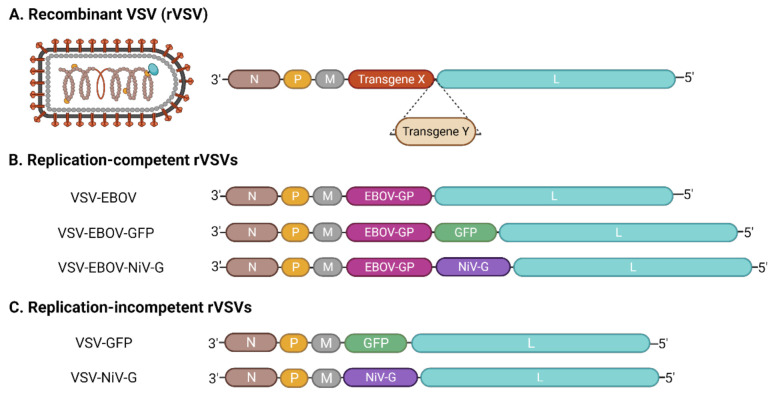Figure 2.
Recombinant VSVs. (A) Manipulation of the VSV genome results in recombinant VSVs (rVSVs) that can be used for a variety of purposes. Most rVSVs contain additional transgenes (i.e., transgene X or Y)—often in place of VSV G—that drive the expression of additional proteins, including other viral glycoproteins or reporter molecules. Insertion of one or more transgenes is flexible and can be accommodated at almost any position within the genome. (B) Replication-competent rVSVs result when the added transgene supports virus replication. For example, in the case of VSV-EBOV, the EBOV GP replaces VSV G but is still sufficient to facilitate the VSV replication cycle [49]. VSV-EBOV-GFP expresses GFP in addition to EBOV GP [50], while VSV-EBOV-NiV G expresses both EBOV GP and the NiV attachment glycoprotein [51]. (C) Replication-incompetent rVSVs result when the added transgene cannot support virus replication. For example, replacement of VSV G with GFP results in a virus that must be pseudotyped with a glycoprotein in order to be infectious [52]. Similarly, NiV G is unable to facilitate virus replication in the absence of VSV G [53]. This figure was created with BioRender.com.

